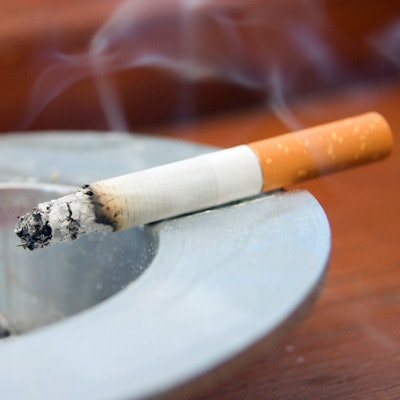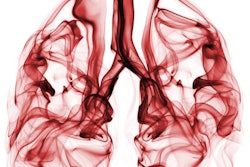
NEW ORLEANS - When the National Lung Screening Trial (NLST) in 2011 reported a 20% lung cancer mortality reduction for high-risk smokers who were screened annually with low-dose CT (LDCT), professional organizations lined up behind CT lung screening. But does the patient population studied in the NLST reflect the real world?
Maybe not, according to a presentation this week at the American Roentgen Ray Society (ARRS) meeting. Phillip Guichet of the University of Southern California's (USC) Keck School of Medicine believes that the NLST's results were based on a population that doesn't reflect the majority of eligible screening patients, as the NLST cohort was younger and of higher socioeconomic status than most patients eligible for annual CT lung cancer screening.
"The NLST study population was very different from much of the U.S. population, especially those in urban areas," Guichet told ARRS session attendees. "It was 91% white, 52% former smokers, and 28% obese."
Guichet and colleagues sought to evaluate the feasibility of establishing a clinical LDCT lung cancer screening program that would serve a socioeconomically disadvantaged, high-risk population -- predominately black, undereducated, and obese -- very different from the population studied in the NLST.
"Our hypothesis was that a socioeconomically disadvantaged and high-risk population would have a greater baseline malignancy rate than the population studied in the NLST," he said.
Different demographics
The USC study's patients were drawn from an urban neighborhood in Los Angeles. It was supported by a two-year grant from the California Community Foundation, and it featured an online patient database and dedicated screening coordinators who enrolled eligible patients, scheduled their screening exams, and organized their transportation to and from the medical center. All patients met eligibility criteria for lung cancer screening from the U.S. Preventive Services Task Force or the National Comprehensive Cancer Network, Guichet said. Cardiothoracic radiologists read the CT scans, assigning each a specific Lung-RADS category.
The study included data from 889 patients referred to the program between July 2015 and April of this year. Of these, 275 underwent baseline CT screening. The majority of the patients (52%) were male, with a mean age of 59 years, and most were black or Hispanic/Latino. As for education, 66% had a high school diploma or less.
In all, 81% of patients who participated in the study were current smokers, with 40 median pack-years. Median body mass index was 28, with 32% of the patients falling into the overweight category and 36% falling into the obese category. In addition, a third of the patients reported exposure to occupational hazards, primarily asbestos and diesel fumes.
| Patient demographics of USC study vs. NLST | ||
| USC study | NLST | |
| Black | 83% | 5% |
| Hispanic/Latino | 10% | 2% |
| Current smokers | 81% | 48% |
Of the 275 LDCT exams, 237 were negative (86%) and 38 were positive (14%), Guichet and colleagues found. Of the 38 positive screens, 20 were categorized as Lung-RADS 3, 11 were Lung-RADS 4A, five were Lung-RADS 4B, and two were Lung-RADS 4X. Two patients have been diagnosed with lung cancer to date, one with stage IIIB small cell lung cancer and one with stage IV lung cancer, Guichet said.
Among the patients with positive findings on LDCT, 55% underwent further evaluation, either with PET/CT and biopsy or LDCT at six months. Of the six-month follow-up LDCT scans, 90% were subsequently negative and 10% were subsequently positive, Guichet said.
Almost a third of the patients had potentially significant incidental findings as well, he noted, with moderate coronary artery calcifications, extrapulmonary masses, and interstitial lung disease topping the list.
Hypothesis adjustment
The researchers' initial hypothesis was that they would see a greater baseline malignancy rate in this high-risk population. But that wasn't the case, Guichet told session attendees: They found a rate of 0.7%, compared with the NLST's 1.1%. Yet the findings suggest that lung cancer screening with LDCT in a socioeconomically disadvantaged, high-risk population yields a different cancer profile than screening in communities with better access to healthcare resources.
"To date, we're seeing a similar baseline malignancy rate but a greater-than-expected prevalence of high-stage and aggressive lung cancers," he said. "All the malignancies detected in our study were advanced lung cancers, whereas these cancers made up a small proportion of the malignancies detected in the NLST."
So what's next? There needs to be better understanding of what prevents underserved patients from getting early CT lung cancer screening and receiving prompt treatment, Guichet concluded. In addition, more research needs to be done on how a CT lung cancer screening program geared toward underserved patients affects mortality rates.
"The survival benefit conferred by LDCT as seen in the NLST may not apply," Guichet said. "More follow-up time is needed to determine whether the reductions in lung cancer mortality will be demonstrated in this population."




















